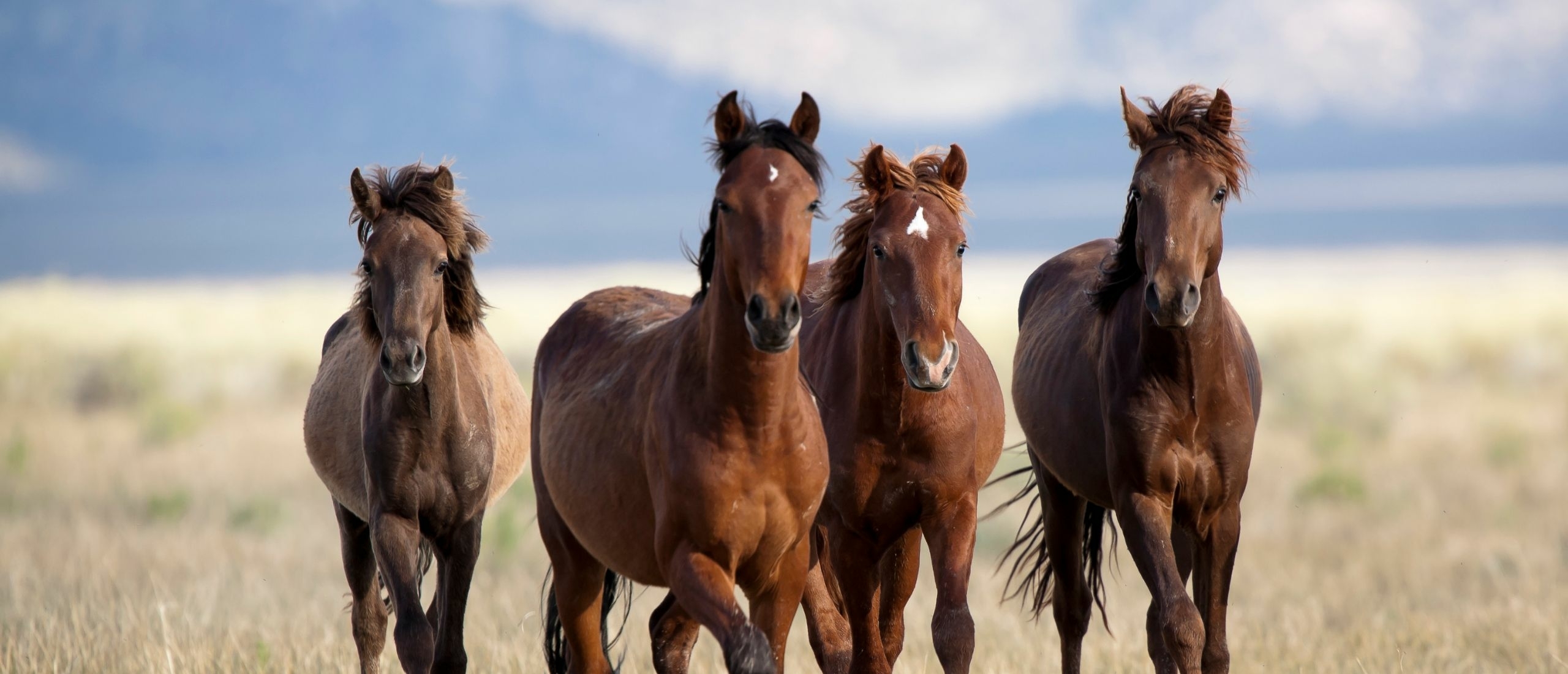
Characteristics
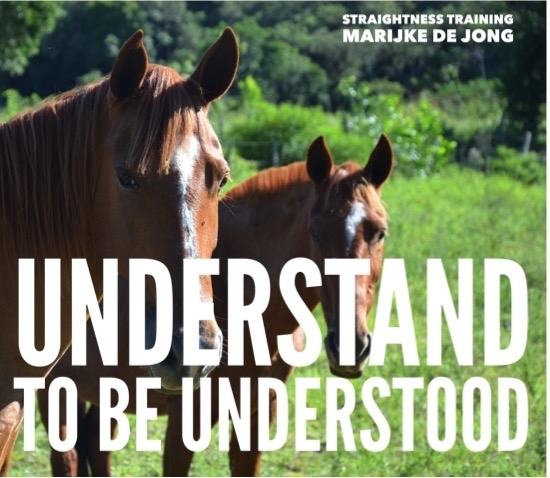 The simple fact that humans are predators and horses are prey animals indicates that man and horse are very different.
The simple fact that humans are predators and horses are prey animals indicates that man and horse are very different.
So to be successful with Straightness Training it is important to have insight in horse characteristics:
It contributes to safety when handling horses.
It prevents communication errors.
It prevents behavioral and physical problems.
And a better understanding will lead to a harmonious cooperation.
This cooperation already started 6000 years ago.
The influence of domestication on the horse’s characteristics
Domestication of the horse has influenced the characteristics of the horse, and this domestication took place around 5000 to 6000 years ago.
During the first contact with humans, the horse stayed in his natural environment. To help the horse, the human gave the horse food and shelter. Searching for food was no longer needed. This made the horse dependent on humans.
Through targeted breeding, humans have influenced the horse and the favorable horse characteristics have been maintained and exaggerated.
Therefore the horse could evolve through centuries from being a hunted animal to becoming a draught-horse, working horse, beast of burden, battle horse and riding animal.
The results of selective breeding and the differing requirements of both humans and the climate created many different horse breeds, from Shetland pony to Clydesdale, from Swedish Cold Blood to Dutch Warm blood, etc.
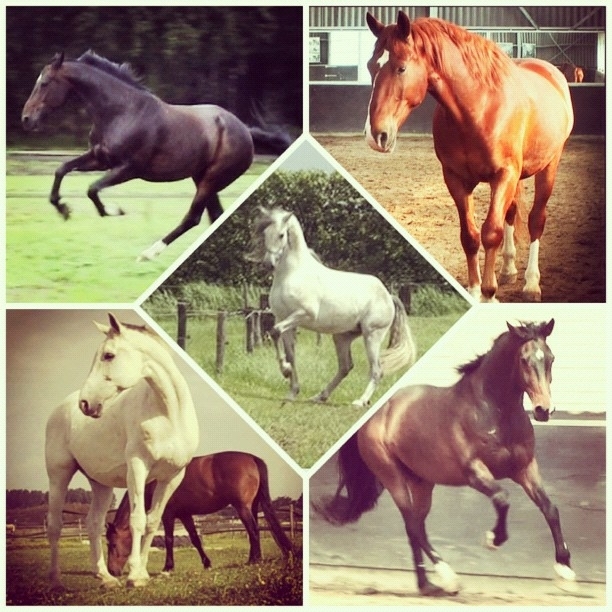
Only the Tarpan and Przewalski horse remain close to their original natures and most closely resemble the wild horses of the past. These horses remain in their natural habitat, out in all weathers living in herds as their wild ancestors did. Also the Konik horses, who also live in the Netherlands, are still close to nature:
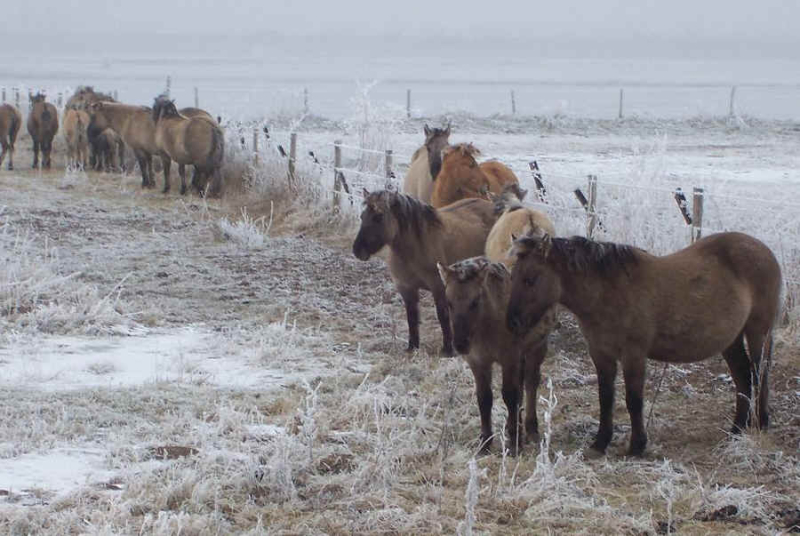
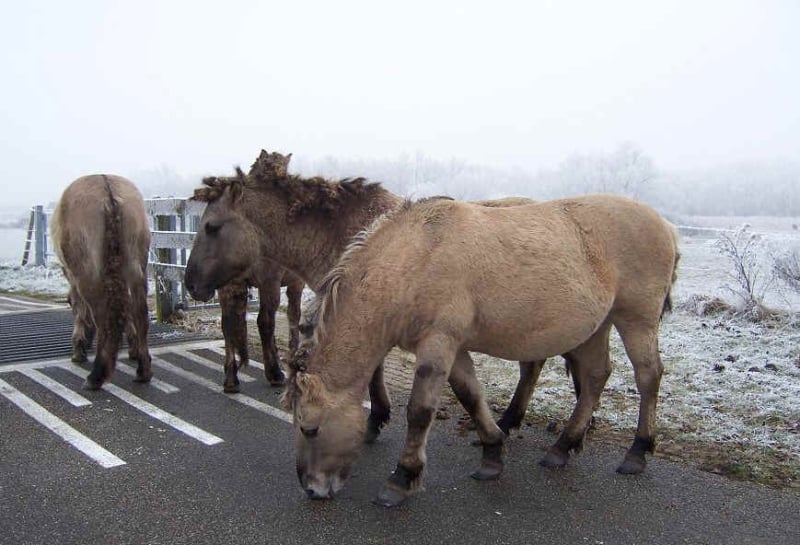
However, horses in captivity, have still many characteristics in common with their wild counterparts!
To be successful in Straightness training it is important to know and to understand these horse characteristics.
10 Important Horse Characteristics
Here are 10 characteristics of the horse we need to take into account when a horse comes into our lives:
- 1. The horse is a herbivore and feeds on mainly grasses, herbs, vegetables, and water.
- 2. The horse is a prey animal for predators and his best defense is to flee.
- 3. Therefor he is also called a flight animal. The horse can reach a very high speed when galloping.
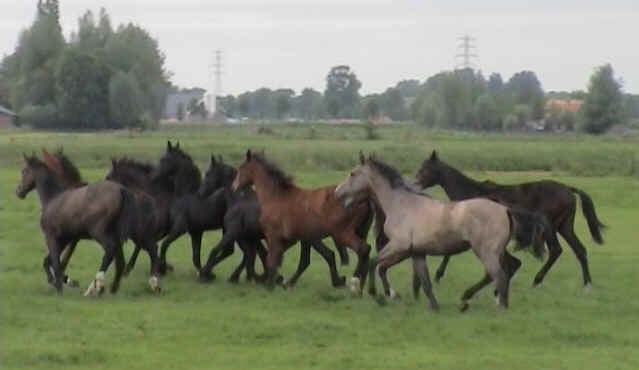
- 4. The horse is a herd animal. Without the protection of the herd it is difficult for the horse to survive in the wild. The horse lives in a group for security, protection, peace and a greater chance of survival. Many eyes and ears ensure that a threat or predator can be spotted quickly.
- 5. The horse is also a social animal. A horse is always born in a harem and a harem usually consists of one adult stallion and on average two to five mares and their offspring who remain with the harem until they are about three years old. Real friendships can grow between two horses. Some friendships can last a lifetime.
- 6. Horses are hierarchical animals. They live in a strict hierarchy and each individual has his place in the pecking order. This provides clarity and peace in the group.
- 7. Horses are steppe/prairie animals. The wild horse is almost constantly moving in its habitat in order to find food, water and minerals.
- 8. Therefore horses are movement animals. Also because of safety a prey animal needs to move a lot. A horse’s nature still has a need for movement and this is a characteristic that has not been lost through domestication.
- 9. Horses are a creature of habit with an internal body clock. Grazing occurs at certain set times and they know when it’s their scheduled time to rest.
- 10 Horses are instinctive animals. A horse often acts instinctively. That means that the reaction is innate, unconscious but effective.
As a horse trainer, we need to take these characteristics into account, we need to be able to recognize them, to anticipate on them in a proper way.
And because of these characteristics a horse has special needs, and we have to make sure we meet the needs of the horse to avoid physical and behavioral problems.
Click HERE to read more about How We Can Meet The Needs of the Horse >>

